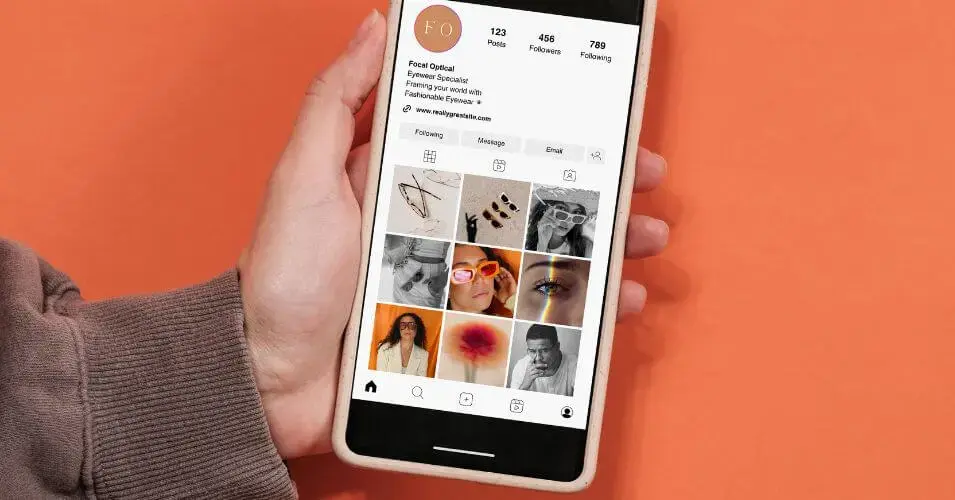The #1 Mistake Startups and Small Businesses Make on Social Media
One of the biggest mistakes that startups and small businesses make on social media is trying to make every single social media platform work right from the start. From a logical standpoint it makes sense – the more platforms we are on, the more people we can reach and get our brand in front of. However, in practice this is almost never the case and focusing on one platform is the best approach.
In this article, I’m going to take you through why startups (and small businesses) should prioritize a single social media platform when they are starting out. Plus, I’ll show you how to decide which one is best based on your business.
Let’s dive in!
The Myth: You Need to Be All Over Social Media
Whenever I’m working with a new client on their digital marketing strategy, social media inevitably comes up and I’ll ask which platform is most important. Depending on the company and whether they are B2B or B2C they usually give me at least 3 or 4 that they consider absolutely vital – thinking they can reach more people by being on more platforms.
However, this is absolutely the wrong approach to take simply due to resource constraints. Simply put, social media is extremely competitive and difficult to do – especially to do well. It requires being able to produce quality content quickly and consistently that is in line with your brand while staying on top of the trends for each specific platform – as well as any algorithmic changes these companies like to throw at you on a weekly basis (just for fun).
Realistically, most startups or small businesses barely have the resources or competence to handle one social media channel, never mind 3 or 4.
The Benefits of Focusing on One Social Media Channel
Efficiency with Resources
As I highlighted above, this is probably the biggest benefit of focusing on one social media channel platform at a time. Instead of needing to create content for 4 different channels and alter the tone, look, and feel to fit each one you can just focus on honing your skills and process for one.
This allows you to produce higher quality content tailored specifically for that platform's audience. In turn, that content is more likely to attract and retain followers which will lead to better engagement, visibility, and recall for your brand.
Faster Learning and Adaptation
This goes hand in hand with efficiency, but I think it is worth calling out by itself. When you focus on a single platform, you can create more content for that platform which in turn allows you to figure out what works and what doesn’t faster.
For example, imagine if instead of altering 1 piece of content for 4 platforms I spent my time creating an extra 3 pieces of content. That means 3x the content, the learning, and the improvement which down the road can be applied to other platforms to scale them more quickly.
Stronger Following that Can Be Leveraged
A larger following on a single platform helps you build a more engaged and loyal community. You only have one place to interact with them so you can respond quicker, create deeper connections, and in general establish a better brand presence. This breeds loyalty which can help you build more brand advocates and potentially reach a wider audience organically or when you decide to scale to other platforms.
How to Choose the Right Social Media Platform
Choosing the right social media platform is important for your startup and depends on a variety of factors like your brand, the industry, your audience, and more. Here are a few of the things I consider first.
Consider Where Your Audience is on Social Media
This is an obvious but important consideration. If I want to get in front of my target customers or ICP, I need to go where they are. While there is always overlap in the audience of each social media platform, the right platform for a B2B SaaS product will be very different than a small business bakery in Panama City, FL. You probably don’t need any crazy research to figure this out – just think about where your customer base is likely to be.
Consider Your Brand and Nature of Business
Depending on what you are selling, certain platforms may be better suited to finding your ideal customer in the right context. For B2B companies this is usually going to be platforms like LinkedIn, Twitter, maybe even Discord and other with a more professional context. On the other hand, if you’re selling straight to consumers then Facebook, Instagram, and TikTok can be great options to build awareness.
Evaluate Your Skillset
Another important consideration is evaluating what you have the skillset to actually create. Now with all the different tools and resources out there today, this shouldn’t be a huge blocker, but it is still a consideration. For example, if you choose a platform like TikTok but don’t want to shoot, edit, or be in any videos then you might want to reconsider which platform you choose.
Consider Platform Strengths
While these are just general guidelines, considering each platform’s strength alongside your skillset can help you settle on the right one.
- LinkedIn: Best for professional networking, B2B marketing, and industry thought leadership.
- Facebook: Good for community building, detailed targeting options for ads, and engaging with a broad audience.
- Instagram: Ideal for visually driven brands, video and image, influencer marketing, location based targeting.
- Twitter: Excellent for real-time updates and engaging with industry conversations.
- YouTube: Perfect for long-form video content, tutorials, and educational material.
- TikTok: Effective for short, video content, especially for products that are intriguing and can easily be demoed.
- Pinterest: Great for visual content, DIY, and lifestyle brands focusing on inspiration and ideas.
Leveraging Your Social Media Growth
Once you have found some success on a single social media channel, it is often tempting to move onto the next. However, this is often where I would advocate building your audience on land you control vs what you rent. In other words, leverage your following to build up your email or SMS list as these are assets you control the message, reach, and frequency with which you stay top of mind with users.
On social media, our business and our accounts are always at the mercy of the massive companies that can change their algorithms or policies on a whim. Once you have the opportunity, build up your own resources and then from there you can grow your additional social media platforms much more easily.
The Best Social Media for Your Brand
One of the biggest mistakes that startups and small businesses make on social media is trying to make every single platform work right from the start. While it might seem logical to think that being on more platforms means reaching more people and increasing brand visibility, in practice, this approach often leads to diluted efforts and inconsistent results.
Start with one and figure out what works for your brand before you try to scale and move onto others. Take my word for the fact that this will save you time, money, and a lot of headache.



